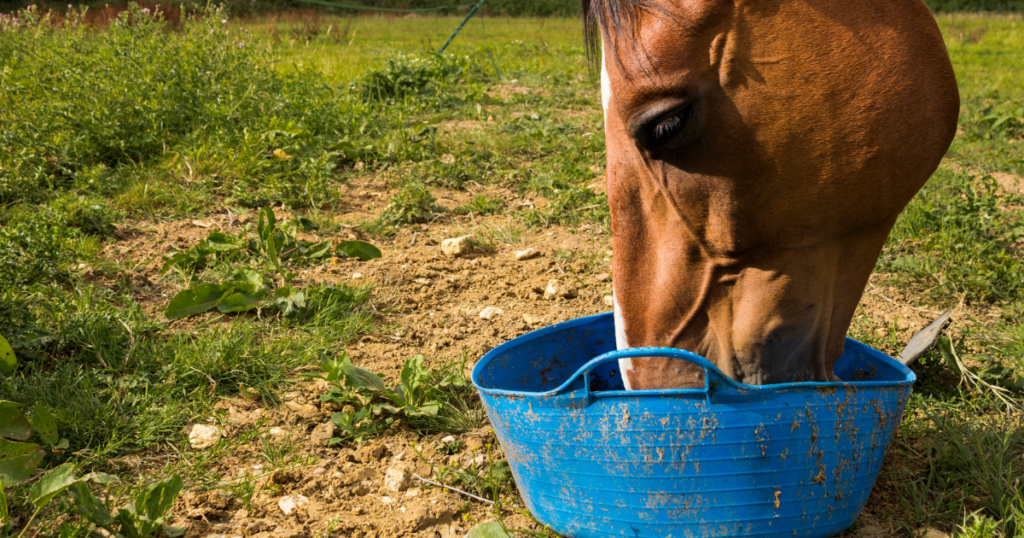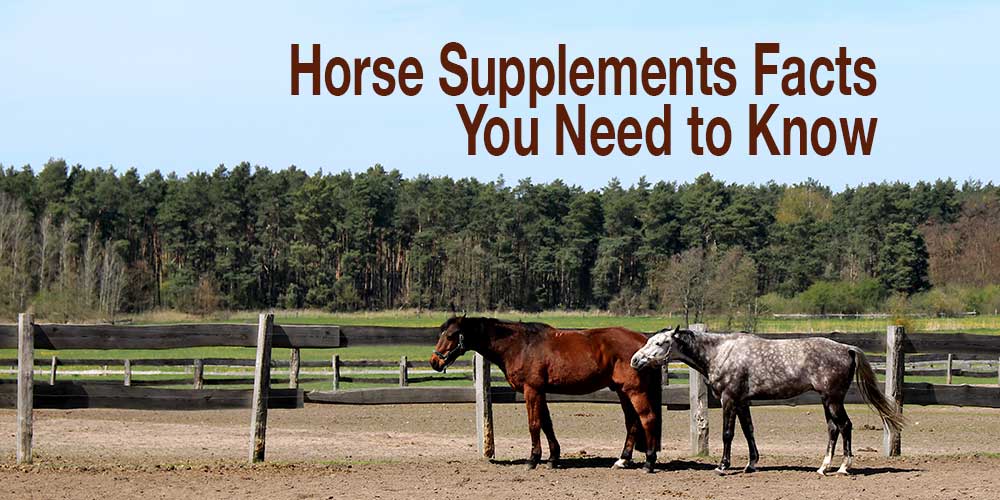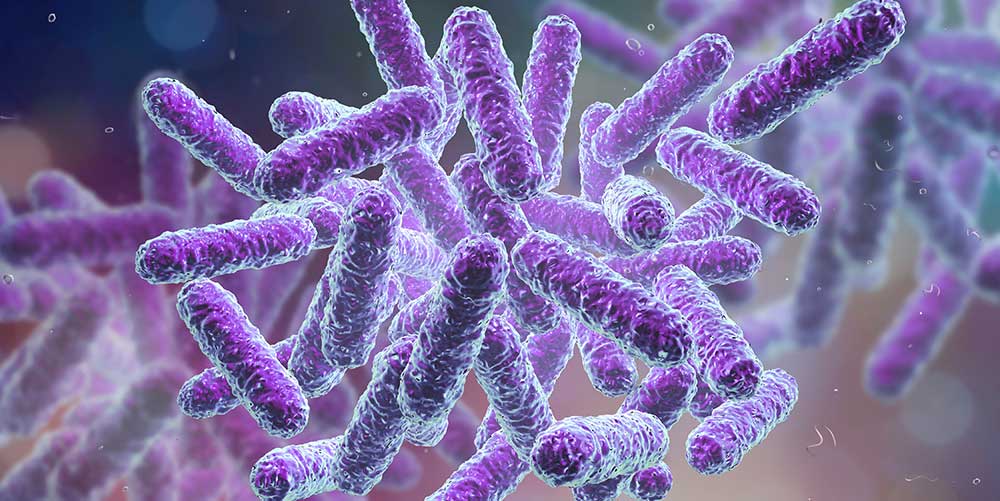Horse Safety First – Why You Should Read Your Horse Feed Supplement Label Two Ways
by Nikki Alvin-Smith
Busy horse owners often find themselves inundated with health information and suggestions for best care and nutrition for their equine partners. A barrage of e-blasts, catalogs and online advertising proffer an overwhelming array of advice that can make any horse owner, however diligent, feel they are coming up short somewhere or missing out.
While it’s true that sometimes the proverbial wheel does get reinvented, for the most part the market forces dish up so much fodder it is hard to keep track. The net result of all this hopefully salient advice is that the horse owner, whether a keen amateur or an experienced professional, throw everything they can into the feed bucket to try and cover all the bases.
What Exactly Are You Feeding Your Horse?
Once a feed product has been purchased, there is a fundamental step that many horse owners overlook that can make the whole purpose of the project trip at the first fence. Whatever horse feed supplement you choose to utilize as a responsible equine caregiver, there is one simple thing you can do to make sure you are on point with your horse feed supplement program that will also probably save you money.
The chemistry of your horse supplement and its efficacy hinges on one major factor. You take the time to read. Throwing money on pots of equine supplement gold, often expensive products that make claims of fixing everything from your horse’s nose to tail (even ailments you didn’t know he had), is not a good route to follow for best equine health care.
While reviewing the product’s specifications published online and intended uses is an obvious necessity, it is amazing to think that perhaps despite our better judgement many of us simply opt for a quick fix and follow along with whatever is touted as fact being indeed, fact. Snake oil sales folks are still out there in various guises. Shopping is still a buyer beware situation and making a good decision on what to buy rests squarely on your shoulders.
After all, your horse cannot talk. He cannot tell you if he’s actually feeling better after you religiously disguise the pellet or powder and add to his feed, or apple sauce up the flavor of the paste medication to get him to swallow it without a fuss.
Your horse cannot explain if he’s experiencing blurry vision, if his metabolic levels are out of balance, or if he has a pounding headache or feels depressed or anxious. Despite being as observant as we can possibly be of our equine partners, subtle signs of illness or distress in our horses is sometimes masked by their stoic natures.
The reality is that by the time we can confidently announce our horse has a problem, it is likely that damage to his health has already been done. Damage that will take some time, effort and expense for him to recuperate from that could have been prevented in the first place.
Read The Label Two Ways
Many horse supplements include a long list of ingredients. The amount and quality of each ingredient contained in one recommended dose can only accomplish the results-driven, evidence-backed research that showcases its efficacy if those ingredients actually exist in the mix.
As an experienced horse breeder, horse trainer and advanced level equestrian competitor I’ve learned, when in doubt ask a professional. That person may be our team vet, our team farrier, a nutrition expert, an alternative or holistic therapy provider, or a fellow competitor. To understand the problem the horse is experiencing in the first place and then to figure out how to not just solve it but resolve it permanently, is often not an easy task.
Product Transparency
When it comes to trusting what my horses ingest as part of their daily diet, it is essential I know what I am putting into the feed mix. Thankfully, there are some manufacturing companies owned by individuals that lead with integrity and where transparency is truly exhibited.
As some of you may know, leading the ‘first flight’ in working with The Association of American Feed Control officials {AAFCO}, the Food and Drug Administration {FDA} and helping to establish the National Animal Supplement Council {NASC} to ensure quality controls and safety protocols governed animal feed supplements, was Grand Meadows’ owner and C.E.O., Nick Hartog. He helped shepherd the lucrative and previously unregulated and sometimes dangerous industry practices into some form of accountability and control. The National Animal Supplement Council (www.nasc.cc), an organization that has a profound impact on the safety, transparency, and legitimacy of the animal supplement industry, is an agency that conducts strict audits of all companies that gain its seal of approval, to help ensure that what manufacturers claim is in their supplements actually is contained therein, and in the quantities and qualities claimed.
“Prior to the introduction of the checks and balances that were introduced with the NASC systems the horse supplement market was essentially like the Wild West. In 1999 I tested 32 joint supplements to see if they matched the label claim and only two passed – clearly the industry had major problems,” explains Nick Hartog.
While certain elements of the formulations in supplements are not tested, due to the expense or legitimacy concerns of present-day testing availability, the majority of formulations are examined and tested in each product that receive the NASC seal are validated as being present and correct. This gives the consumer some level of protection against companies that simply have no clue what they are doing, are simply out to make a quick buck or execute nefarious or safety ignorant business practices.
Today there are many companies that operate under the umbrella of the NASC seal, and the necessary self-regulation of the industry that was spearheaded by a few visionaries has without question benefited horses and the human contingent that love and care for their health and well-being.
So great. Well done. You’ve read the supplement label and see the seal stamped on the tub or packet and feel happy you’ve made a good choice. Well, that’s a good start for sure.
Dosage and Timeline
The second important part of reading the label is following the manufacturer’s recommended instructions for dosage and timeline for use. We all know that if our doctor prescribes us a course of antibiotics it is important we finish the course (given we have no allergic response to it) to avoid the targeted bacteria becoming resistant to the drugs being administered or the health issue returning. So as responsible horse caregivers, we will likely complete any prescribed course of treatment. But then we often take things into our own hands don’t we? Wrongly believing we know better than our vets and the medication or supplement manufacturers. The more is better thought process.
Not following instructions or recommendations can have terrible consequences, and learning to follow the professional guidance we are provided rather than take things upon ourselves is a good lesson to learn vicariously rather than to experience first-hand.
It may seem obvious to some, but giving a horse more of something than the manufacturer recommends because you figure more is better, is likely a recipe for long term health disaster. Amazingly many horse trainers and caring equine owners give horses in their custody a myriad of supplements without much clue as to any contraindications, long term use benefits or quality of ingredients. When you add the frequent use of products for the wrong purpose and the likelihood of long-term damage to the horse’s health as a result to this equation, it is logical to assume that the poor horse is going to suffer unnecessarily.
Consider veterinary prescribed medications that are designed to treat a malady like equine gastric ulcer syndrome {EGUS} for example, will do nothing to support the horse’s long term gut health if you combine brands or dish up cocktails of them with long term use because that is not what they are manufactured to do. They are a treatment. It’s not just a waste of money, it puts your horse’s long-term health at risk. It is far better to adopt a postbiotic support product and fix the problem that caused the ulcers in the first place once they are resolved, rather than consistently treat the symptoms of the disease or worse treat the horse for something he no longer exhibits further undermining the health of his digestive system.
Here’s what Nick Hartog has to share on the EGUS issue:
“The performance horse industry is facing an existential threat with the horrendous statistics on horses showing ulcer symptoms and the widespread abuse of ulcer medications being used outside of normal treatment parameters. There is little awareness that the long-term use of these drugs actually causes a reverse effect, rebound acid hypersecretion. RAUS causes excessive acid production as a response to the acid suppression that the ulcer meds promote. This triggers an endless cycle of more ulcers. In early trials with Grand Postbiotic we have been able to wean multiple horses off of meds without ulcer symptoms returning.”
Following the herd is not always the best idea. Sometimes it is better to take a hard look at where we are going and what track we are following. Doing something because it seems better than doing nothing doesn’t really make sense does it?
The reality is there is always a better and best solution to any problem. You may not necessarily always manage to find the best solution even though it may exist. But one thing is for sure, you won’t find the better one either unless you look for it and action it.
Making the best decision with the information you have at the time, really comes down to what information do you have? When you have confidence in what is actually in your horse supplement and follow the guidance the manufacturer provides as to its use, you’re a good way toward making that best decision.
About the Author

Nikki Alvin-Smith is a seasoned freelance writer who loves to share her lifelong experience with everything horse, rural lifestyle, and travel. Her works have been printed in more than two hundred fifty equestrian magazines worldwide and her published articles number in the thousands.
A Brit who has called New York home for more than 40 years, Nikki brings a unique perspective to her writing. Her experience as an international level Grand Prix dressage competitor, coach, and worldwide clinician, with a youth spent showjumping and foxhunting, provides lots of educational truths and fun moments to share with the reader. Additionally, she has been a horse breeder and importer of Hanoverian, Dutch and Iberian horses for more than 25 years. Together with her husband Paul Alvin-Smith, who is also a Grand Prix rider, operates Willowview Hill Farm, an organic hay farm and private dressage yard in the beautiful Catskill Mountains of New York.
Visit nikkialvinsmithstudio.com or horseinakiltmedia.com to learn more.





